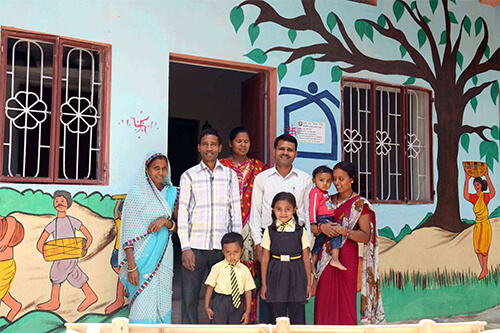Table of Contents
The Role of Public Policy Professionals in Implementing the National Housing Policy

Housing isn’t just bricks and mortar. It is the foundation of human dignity, economic stability, and social inclusion. In India, where rapid urbanisation co-exists with persistent rural poverty, the need for safe and affordable housing has assumed importance. The national housing policy, anchored in flagship schemes like PMAY-U (Urban) and PMAY-G (Gramin), seeks to address this challenge by aiming for “Housing for All.”
Yet, transforming this vision into tangible outcomes is a complex process. It requires not only financial resources and administrative machinery but also the nuanced expertise of public policy professionals. They act as the bridge between high-level policy making and ground reality, ensuring that schemes just do not remain announced, but can be implemented well and are impactful for millions of families across the country.
The Evolving Landscape of India’s Housing Policy
As of March 2025, over 1.18 crore urban houses were sanctioned under PMAY-U, with more than 89 lakh completed. PMAY-G has seen 3.61 crore rural houses sanctioned, of which approximately 2.74 crore were completed. With over 75% achievement under both these figures reflect significant progress toward “Housing for All.”
Yet, implementation challenges persist and progress is not uniform across the country. In Southern India’s Mysuru district, only 64% of allocated rural homes are underway, and in Chamarajanagar district, the progress further lags at 27%. In Chamarajanagar itself, over 35,000 houseless families and 4,471 site-less families were identified through GPS-aided surveys in 2024–25.
On the urban front, Ranchi district showcases a success story, delivering 11,052 homes out of 12,587 sanctioned, with an 88% completion rate.
These snapshots show that while the national housing policy reflects ambition and scale, its outcomes depend fundamentally on effective execution.
Why Public Policy Professionals Are Essential
Policymaking without execution is just theory. Skilled public policy professionals translate vision into reality by:
- Drafting Inclusive Policy Design: Tailoring programs like PMAY to reflect local terrain, social fabric, and needs.
- Leveraging Data for Decision-Making: Using survey data, cost analyses, and GIS tools to ensure equitable and efficient deployment.
- Coordinating Stakeholders: From urban local bodies to construction agencies and civil society, coordination is key to synchronised progress.
- Structuring Financing Smartly: Combining housing grants with MGNREGA, sanitation schemes, or green credit to make homes financially accessible.
- Ensuring Accountability: Implementing monitoring tools such as dashboards, field audits, and grievance redressal mechanisms to drive transparency.
- Narrating with Empathy: Transforming raw data into stories, emphasising dignity, opportunity, and sustainable living.
Grounded Examples of Policy Translate into Progress
- Ranchi’s PMAY-U Success
Through meticulous planning and inclusion, Ranchi delivered housewarming ceremonies with plant gifts symbolising sustainable beginnings, an example of policy, narrative, and implementation weaving seamlessly. - Chamarajanagar’s Data-Led Identification
GPS verification, photo surveys, and gram sabha consultations ensured that beneficiary lists were accurate and transparent. Public policy professionals excelled at keeping vulnerable families visible and prioritized. - Mysuru & Chamarajanagar: Tackling Cost Overruns
Policy teams negotiated with municipalities and state agencies to find cost-effective models, though rising input costs continue to pose delays. These realities highlight how adaptive execution matters each day.
What Skills Do Policy Professionals Bring?
To implement the national housing policy effectively, professionals require:
- Urban and rural planning sensibilities
- Proficiency in financial structuring and subsidy design
- Stakeholder engagement and negotiation finesse
- Monitoring and evaluation frameworks
- Storytelling and advocacy for inclusivity
How ISPP Nurtures These Leaders
At the Indian School of Public Policy (ISPP), students build these crucial skills through:
- Courses in urban governance, affordable housing finance, and policy communication
- Real-world capstone projects with housing programs and urban missions
- Applying narrative design alongside data tools to address inequality and infrastructure gaps
ISPP alumni are already shaping housing policy from district planning units to national ministries, becoming critical agents in transforming the national housing policy from strategy into shelter.
India’s national housing policy represents one of the most ambitious social welfare programs in recent memory. Yet, the difference between sanctioned plans and safe homes lies in execution. That execution is driven by policy professionals—individuals who bridge the gap between intention and impact. Through rigorous analysis, stakeholder engagement, strategic storytelling, and adaptive action, they turn frameworks into foundations.
ISPP is dedicated to training these professionals. By combining data savvy, narrative finesse, and public empathy, ISPP ensures that “Housing for All” becomes more than a vision, it becomes reality.





